Which Type of Rice Is the Healthiest?
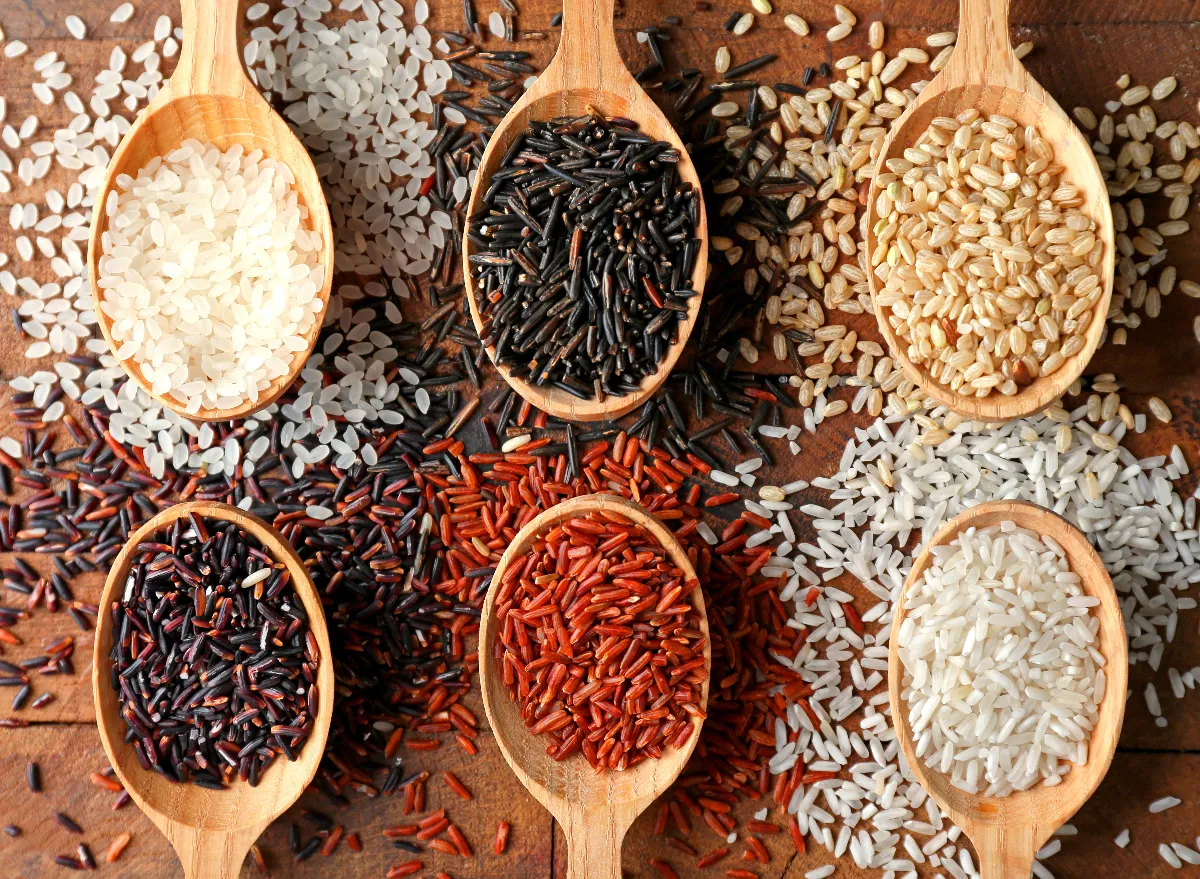
Rice has been one of the most produced and consumed grains worldwide for centuries, and for good reason. Rice contains fiber, carbohydrates, vitamins, minerals, and even some protein and healthy fat. It is a versatile grain that shows up everywhere and can be used in just about any dish. There are various types of rice based on differences like kernel size, aromatics, processing, and color.
Here we explore four different rice types–white, brown, black, and red—based on color and what contribution they may or may not make to our diets. For recipe ideas, check out 5 Healthy Brown Rice Recipes for Weight Loss.
White Rice
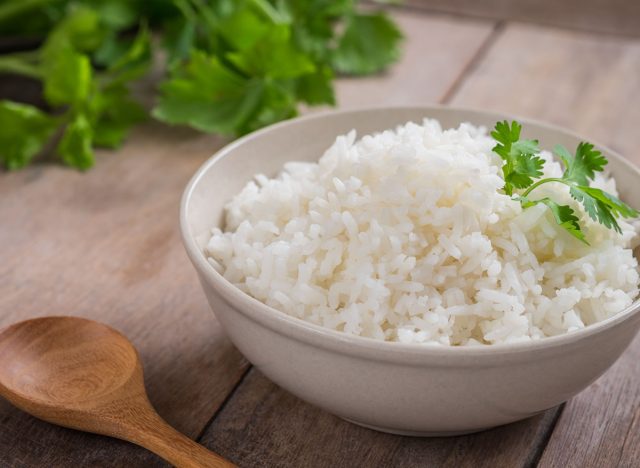
The most common of all rice varieties, white rice is omnipresent in numerous spots across the grocery store, is often a core ingredient in meal kits, and makes an appearance on many popular restaurant menus. It's an affordable food that soaks up flavor and pairs well with an array of dishes, from curries to sushi to jambalaya and everything in between. White rice is an enriched rice, which usually contains added iron, thiamin (vitamin B1), niacin (vitamin B3), and folic acid. It has been milled to remove not only the outer husk, but also the bran and germ layers of the kernel. It comes in at about 160 calories per ¼ cup dry.
Brown Rice
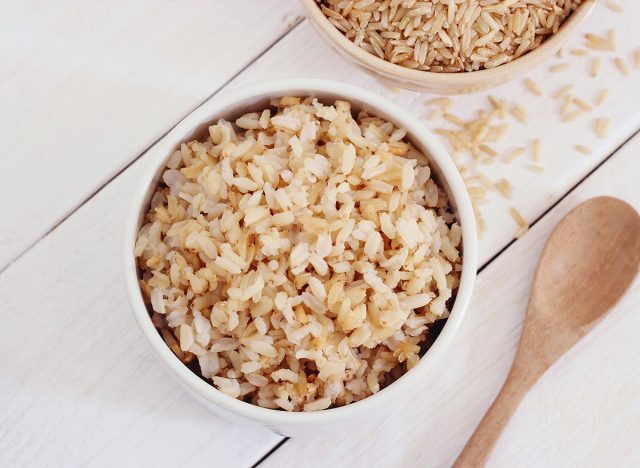
Brown rice is one of the most recognized whole grains, alongside some of its cousins like oats, whole wheat, and quinoa, as it contains all three important parts of the grain: bran, endosperm, and germ. Interestingly enough, however, brown rice only has about 1.5 grams more fiber on average per ¼ cup dry serving compared to white rice, therefore not making the same fiber impact as other whole grains on the market do against their refined counterparts. Although the extra gram of fiber, which is mostly insoluble, might be helpful for digestive health by acting as a gentle laxative, the difference isn't as striking as say, a sweetened refined cereal versus bran cereal.
Black Rice
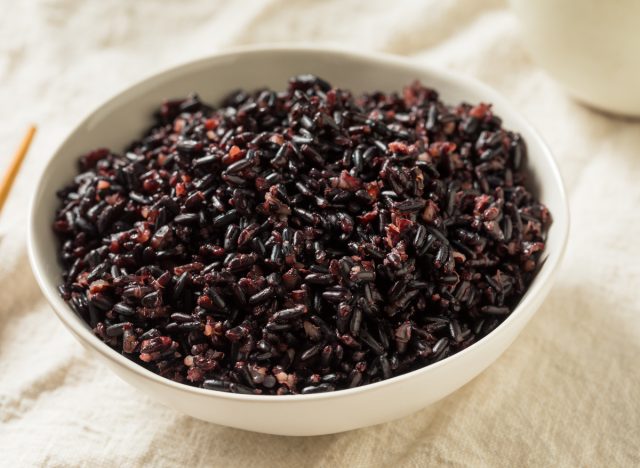
Black rice, also known as purple, forbidden, or Emperor's rice, has been popular among Eastern cultures for years but has been slower to make its entrance into the Western side of the globe. Black rice looks black in color when dry, but once it is cooked, it takes on a more purple hue. This heirloom rice has been studied for its concentration of anthocyanins, a flavonoid pigment, which may be associated with cardiovascular disease, cancer, and neurodegenerative disease protection. Black rice packs a greater hit on fiber and protein compared to brown rice, at about five grams protein and three grams fiber per ¼ cup dry serving. Black rice is best enjoyed in porridge, rice salads, or as fried rice.
Red Rice
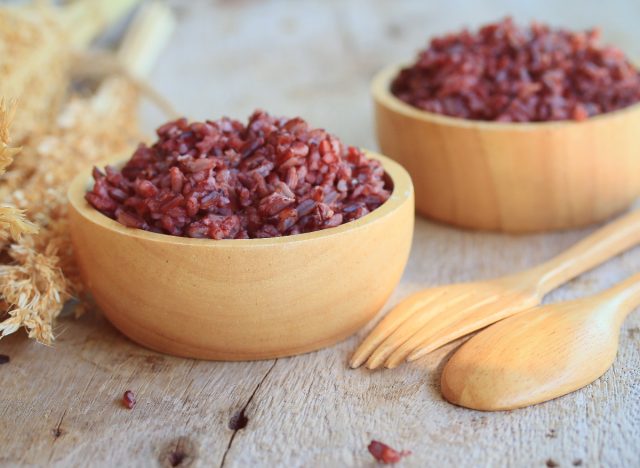
Red rice is a deeply red/honey-colored grain with a slightly savory and nutty flavor and a chewy texture. Some existing research has investigated red rice's positive inhibitory effects on leukemia, cervical, and stomach cancer cells due to its proanthocyanidin content. Red rice also may exhibit antidiabetic effects as studied in a 2016 paper from the Journal of Agricultural and Food Chemistry. The study found a 2.3- to 2.7-fold increase in basal glucose uptake (important for the proper regulation of blood sugars) by exposure to red rice bran extracts. Analyses of various types of rice also tend to find red rice to be higher in tocotrienols, a form of vitamin E, which is linked to neuroprotection, anti-cancer activity, and cholesterol-lowering qualities. Red rice works wonderfully in pilafs, salads, and soups.
So, which rice should you choose? Select a rice that suits your tastebuds and is appropriate for certain dishes, making sure to view the ingredients to avoid added seasonings or salt so you can be in control of these additions in your own kitchen. If you're open to any form of rice to complete your meal, snack, or dessert idea, reach for black rice as a top pick for its impressive fiber, protein, and possible chronic disease-fighting capability.









